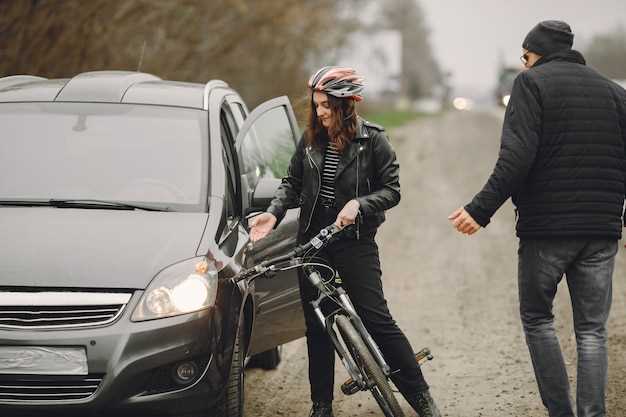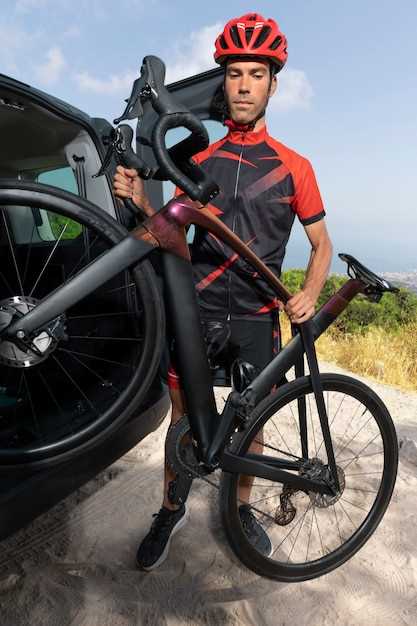
Transporting your race bike safely is crucial to maintaining its performance and longevity. Whether you’re heading to a competition, a weekend riding trip, or simply transporting your bike to the local shop, ensuring its protection during transit is essential. This article will provide you with essential tips to safeguard your bike from potential damage.
One of the primary concerns during bike transportation is securing your bike properly. A well-secured bike minimizes movement, reducing the risk of scratches, dents, or structural damage. Using a high-quality bike rack designed specifically for your vehicle is a critical first step. Additionally, removing accessories such as water bottles, lights, and computer devices can prevent loss or damage.
Furthermore, understanding the transportation environment is vital. If you’re flying, you may want to consider using a bike travel case for added protection against rough handling. For road trips, make sure to protect your bike from weather elements–moisture, dirt, and UV rays can all take a toll on your bike’s components. By following these guidelines, you can ensure that your race bike stays in top condition, ready for the next challenge.
Choosing the Right Bike Carrier for Your Race Bike

Selecting the right bike carrier is crucial for ensuring the safe transportation of your race bike. There are several types of bike carriers available, each with distinct features that cater to different needs. Consider the following factors to make an informed choice.
First, identify your vehicle type. Roof-mounted carriers are ideal for cars with high clearance and adequate towing capacity, while hitch-mounted carriers offer better accessibility and ease of use for most vehicles. Trunk-mounted carriers are a budget-friendly option, but may not provide the same level of stability and protection as other types.
Next, assess the weight and frame geometry of your race bike. Ensure the carrier you choose can support the bike’s weight and is adjustable to accommodate various frame styles. Many carriers come with specific attachments for different frame designs to prevent damage during transport.
Security is another vital aspect. Look for carriers with robust locking mechanisms to secure both the bike and the carrier to your vehicle. Features like integrated locks or compatibility with additional locking systems can provide peace of mind during long trips.
Ease of use and installation should also be taken into account. A bike carrier that is simple to mount and dismount can save valuable time and effort, especially when you are on the go to a race. Consider carriers that allow for quick adjustments and easy loading processes.
Finally, evaluate additional features such as foldability or the ability to carry multiple bikes. These elements can enhance the versatility of the carrier, making it suitable for various transportation needs beyond racing. Thoroughly researching options based on these criteria will help you choose a reliable bike carrier that will protect your investment and ensure safe travels to your next race.
Securing Your Race Bike During Transport

Properly securing your race bike during transport is crucial to prevent damage and ensure its safety. Here are essential steps to follow:
1. Use a Quality Bike Case or Container: Invest in a sturdy bike case or container designed specifically for transporting bicycles. These cases provide excellent protection against impacts and environmental factors. Make sure it is padded and has compartments for various bike components.
2. Disassemble When Necessary: If using a hard case, consider disassembling your bike. Remove the front wheel, handlebars, and pedals. This step not only helps to fit your bike into the case but also minimizes the risk of damage during transit.
3. Secure All Components: Use foam padding or bubble wrap to protect fragile parts such as the fork and rear derailleur. Secure any loose components with zip ties or straps to prevent movement inside the container.
4. Invest in Locking Mechanisms: When transporting your bike on a roof rack or hitch mount, use high-quality locks to secure your bike. Look for U-locks or chain locks that are resistant to cutting, and ensure they are properly fastened to both the bike and the carrier.
5. Double Check the Setup: Before hitting the road, double-check all straps and locks. Ensure that the bike and its components are secure and that there is no risk of them shifting during transport. Conduct a quick inspection of the carrier to ensure it is firmly attached.
6. Pay Attention to Weather Conditions: If you’re transporting your bike during adverse weather, consider using a waterproof cover to shield it from rain or snow. Prolonged exposure to moisture can lead to rust and other damage.
7. Drive with Caution: While on the road, drive cautiously and avoid abrupt maneuvers that could cause jostling. Smooth acceleration and deceleration can greatly contribute to the safety of your bike while being transported.
Implementing these tips will help ensure that your race bike arrives at its destination in perfect condition, ready for your next competition.
Preparing Your Race Bike for the Journey
Before embarking on your trip with your race bike, proper preparation is essential to ensure its safety and performance upon arrival. Start by cleaning your bike thoroughly to remove dirt and grime. This not only helps in maintaining its condition but also allows you to spot any potential issues such as loose components or wear and tear.
Next, check all essential components including the brakes, gears, and tires. Make sure the brake pads are in good condition, the gears shift smoothly, and the tires are properly inflated. It’s advisable to carry out any necessary repairs or tune-ups before packing your bike for travel.
When it’s time to pack your bike, consider using a padded bike bag or hard case, as these offer superior protection against impacts. Remove any easily damaged components, such as the wheels, pedals, or handlebars, and pack them separately. Use bubble wrap or foam padding to secure parts and minimize movement within the bag.
If you’re traveling by air, be sure to check with the airline for specific regulations regarding bike transport. Some airlines may have special requirements for packaging or additional fees, so preparing ahead can save you from unexpected complications.
Lastly, make a checklist of all the items you need to bring, including essential tools, spare tubes, and your cycling gear. This preparation strategy not only protects your investment but also allows you to focus on enjoying the ride when you reach your destination.

